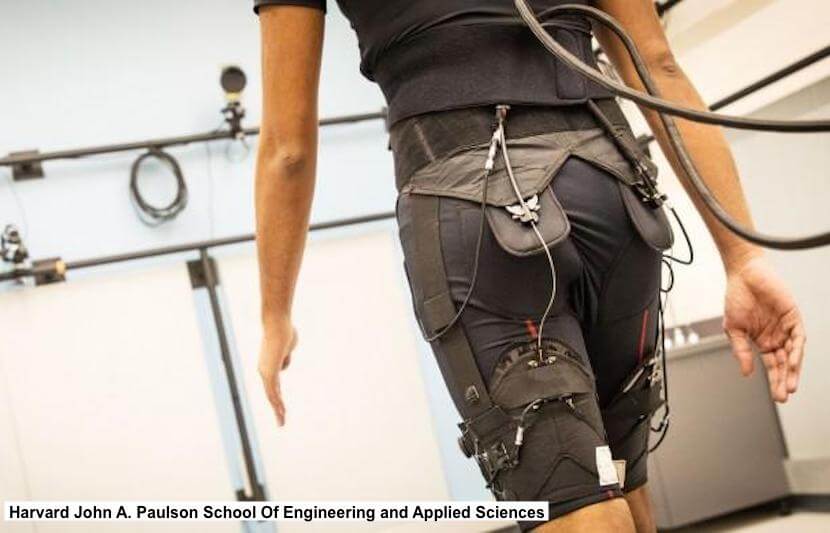Researchers from the Harvard John A. Paulson School of Engineering and Applied and Sciences (SEAS) and the Wyss Institute for Biologically Inspired Engineering have developed a machine learning algorithm that helps wearable exosuits conform to individual motion habits.
For an exosuit to effectively serve its purpose, it must be perfectly tailored to fit its user’s unique motions. This revolutionary algorithm is much more efficient than previous methods, which required manipulating the parameters of each individual suit.
The full study is published in Science Robotics.
“Wearable devices have been shown to improve the performance of human walking and running,” said Ye Ding, a postdoctoral fellow at SEAS and co-first author of the study. “However, the response variance between wearers for fixed assistive strategies can be high, leading to our hypothesis that individualized controllers could further improve walking economy.”
Humans, in order to save energy, subconsciously make frequent adjustments to the way we move. This algorithm, unlike preceding methods, allows for those modifications.
“Before, if you had three different users walking with assistive devices, you would need three different assistance strategies,” Myunghee Kim, a postdoctoral research fellow at SEAS and co-first author of the study, said in a statement. “Finding the right control parameters for each wearer used to be a difficult, step-by-step process because not only do all humans walk a little differently but the experiments required to manually tune parameters are complicated and time consuming.”
Shortening the time it takes to personalize an exosuit was one of the leading initiatives for this study.
“With wearable robots like soft exosuits, it is critical that the right assistance is delivered at the right time so that they can work synergistically with the wearer,” Conor Walsh, the John L. Loeb Associate Professor of Engineering and Applied Sciences at SEAS and co-algorithm developer, said in a statement. “With these online optimization algorithms, systems can learn how to achieve this automatically in about twenty minutes, thus maximizing benefit to the wearer.”
To develop the algorithm, researchers used a technique called human-in-the-loop optimization. This strategy uses measurements of human breathing rate and other physiological signals to adjust control parameters of the devices in real time.
In the study, the researchers observed that those who used the exosuit equipped with the algorithm used 17.4 percent less energy compared to people who walked without the device.

“Optimization and learning algorithms will have a big impact on future wearable robotic devices designed to assist a range of behaviors,” Scott Kuindersma, assistant professor of engineering and computer science at SEAS and co-algorithm developer, said in a statement. “These results show that optimizing even very simple controllers can provide a significant, individualized benefit to users while walking.”
This specific study focused on hip movements, but the “results suggest that this method can be applied to other wearable devices, and can have an impact on improving the performance of all other wearable robotic devices,” said Ding.
The researchers are already working on developing their algorithm to construct more advanced machines that could assist multiple joints, such as the hip and ankle, at the same time.
Ding acknowledges a possible chance for human adaptation to the devices and anticipates developing a way to minimize its effects in further studies.



